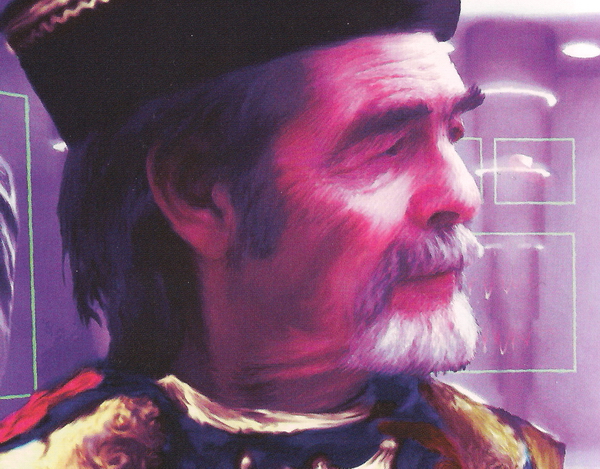|
| |
|
STORY PLACEMENT THIS STORY TAKES PLACE BETWEEN THE TV STORY "REVELATION OF THE DALEKS" AND THE NOVEL "THE ULTIMATE EVIL."
WRITTEN BY GRAHAM WILLIAMS
RECOMMENDED PURCHASE OFFICIAL TARGET BOOKS PAPERBACK (ISBN 0-426 -20334-8) RELEASED IN MAY 1989.
BLURB Drawn into the nex- us of the primeval cauldron itself, the Doctor and Peri are somewhat surprised to find themselves at Blackpool Pleasure Beach.
Is it really just chance that has brought them to the funfair? Or is their arrival somehow connected with the sinister presence of a rather familiar Chinese Mandarin?
PRODUCTION CODE 6Y/A/A
WRITTEN BY GRAHAM WILLIAMS
ADAPTED FOR AUDIO BY JOHN AINSWORTH
DIRECTED BY JOHN AINSWORTH
RECOMMENDED PURCHASE BIG FINISH 'THE LOST STORIES' CD#1.1 (ISBN 1-84435-444-3) RELEASED IN NOVEMBER 2009.
BLURB The TARDIS has been drawn to Blackpool in the year 1985, where the Doctor intends to investigate a dangerous space/ time vortex… while enjoying some local attractions along the way. But an old enemy is watching from his base deep within the amusement park, a timeless being
who craves revenge. returned. The game is on. And, should he lose, the Doctor will pay the ultimate
forfeit...
|
|
|
The Nightmare Fair MAY 1989
In May 1989 Target books released The Nightmare Fair, the first in their series of ‘Missing Episodes’ to be novelised. By the time of the series’ much publicised cancellation in 1985, work had actually begun on several serials for the new season. Scripts for this op-ening two-parter, penned by former series producer Graham Williams, had already been approved and director Matthew Robinson was all set to begin filming in Blackpool in April 1985. If completed, this serial would have begun Doctor Who’s twenty-third run, picking up the story following the quasi-cliffhanger ending to Revelation of the Daleks.
Now despite the odd exception, I cannot stand the Williams’ era of Doctor Who. However, I must concede that the one thing that his regime did better than any other was humour, and humour is certainly something that The Nightmare Fair possesses in abundance. Indeed, after reading Williams’ wonderfully witty novelisation of his unproduced script, it really has to be said that this ‘missing season’ held a hell of a lot more promise than the mostly-awful Trial of a Time Lord saga that we had to endure through the winter of 1986.
Williams’ witty, verbose, and dazzling prose aside, the aspect of The Nightmare Fair that I enjoyed the most was the author’s handle on all his characters, particularly the sixth Doctor. The whole novelisation is written not only with its tongue firmly planted in its cheek, but also with a certain pomposity that positively reeks of Colin Baker’s Doctor. At certain points, it feels as if the Time Lord himself had sat down with pen and ink to sagaciously chronicle his most recent adventure!
What’s more, here Williams seems to have taken the elements that worked best in The Celestial Toymaker (namely the Toymaker himself and his penchant for sadistic games) and grounded them in the much more relatable setting of 1980s Blackpool. From reading the novelisation, it seems evident that on television Michael Gough would have spent the bulk of the first episode lurking in the shadows, disguised as a Chinese Mandarin, before revealing himself shortly before the cliffhanger and then taking centre-stage in the second episode. This means that the Toymaker would have been utilised far more effectively here than he was in his original outing, where he spent half of the serial playing a game against a silent, disembodied hand!
“…then your battle will never end?”
Here, the Toymaker spends most of the latter half of the book exchanging eloquent banter with the Doctor, the author taking more time to explore the Toymaker’s mysterious origin and unique motivation in much more depth than original writers Brian Hayles, Gerry Davis and Donald Tosh ever did. This insight into the Toymaker’s character makes the story’s ending almost bittersweet, especially for the Doctor who is devastated by guilt over what he has had to do. Once again, there was no other way…
In summary then, as a huge fan of sixth Doctor and the hugely underrated Season 22, I look upon The Nightmare Fair with great regret. From reading this novelisation – which is a great, original Doctor Who novel in its own right; the first original Doctor Who novel, one could argue – there is no question that with a location shoot in Blackpool, combined
with the mouth-watering
line-up of Baker versus Gough, The Nightmare Fair would have been
one hell of a television serial... a television serial that would have
most probably put The Celestial Toymaker that spawned it to shame.
|
|
|
Copyright © E.G. Wolverson 2006
E.G. Wolverson has asserted his right under the Copyright, Designs and Patents Act, 1988 to be identified as the author of this work. |
|
|
The Nightmare Fair NOVEMBER 2009 (2 50-MINUTE EPISODES)
On the back of the success that their adaptations of the three Doctor Who stage plays enjoyed, Big Finish’s announcement of their bold mission to breathe new life into the show’s abandoned twenty-third season will not have come as a shock to many. What did surprise me though was the extraordinarily wide remit of these ‘Lost Stories’. I’d expected adaptations of The Nightmare Fair, The Ultimate Evil, Mission to Magnus, and possibly – if we were very lucky – something born out of Robert Holmes’ enticing pitch for his Auton romp, Yellow Fever and How to Cure It. Instead though, Big Finish have crafted a whole season – more than a season, actually, in terms of episodes – out of aborted scripts and nearly wases going right back to the 1970s.
The first release in this new range simply had to be The Nightmare Fair; to open with any-thing else would have been sheer lunacy. Without a doubt the most high-profile of all Doctor Who’s unmade adventures, former series producer Graham Williams’ two-part script came tantalisingly close to going before the cameras before the plug was pulled in 1985 and the show was infamously put on hiatus. The story of The Nightmare Fair is also familiar to many readers as it was novelised by Williams in May 1989 for Target books’ short-lived Missing Episodes range.
Above: Some of Alex Mallinson's handiwork for the CD release's booklet
Big Finish’s presentation of The Nightmare Fair clearly beats the battered old paperback hands down. Alex Mallinson provides Big Finish’s first ever reversible cover - the front of the booklet features a slight corruption of the standard range cover, whilst the rear boasts a fabulous retro design, neon-tube logo and all – together with one of his typically stunning centrefolds and some lovely shots of the cast and crew. It’s easy to forget, particularly as we’re now well into the age of the download, just what an exceptional job Big Finish do in packaging their CDs; just how much more you get for relatively little extra cost.
ed (albeit very uneven) episodes and scored with some suitably repellent 1980s sounds, this production really sounds like something that somebody recorded from the television with a microphone and a tape deck back in 1985 (suitably cleaned-up and remastered, obviously). Applause for Jamie Robertson!
And though it has been some years now since I read the novelisation of this story, from what I recall of it John Ainsworth’s adaptation doesn’t stray too far from what Williams set down in the book. Only Colin Baker’s Doctor seems a little less pretentious than I remember, which is a bit of a pity as Williams’ novelisation seemed to take great delight in wallowing the early sixth Doctor’s pomposity; even mirroring it to a certain extent in his verbose and florid prose.
The biggest departure from Williams’ original script though is, of course, the Toymaker him-self. With nonagenarian Michael Gough unable to reprise the role that he played forty-four years ago, the part had to be recast. Thankfully though, David Bailie (The Robots of Death) does a beautiful job with the character. Far from impersonating Gough, Bailie’s soft tones and mild, childlike, manner create an altogether different Toymaker – one that I’m confident many will find even more unsettling than Gough’s wily original.
Above: David Bailie - the new face of the Toymaker!
Furthermore, as fortune would have it, this new Toymaker seems to suit the story’s narrative much better than the original would have done; he even fits rather nicely with the end of Gary Russell’s novel Divided Loyalties. And though The Nightmare Fair doesn’t go to the lengths that Divided Loyalties did in setting out the Toymaker’s place in the universe’s pantheon of higher beings, the second episode of this production does flesh out parts of the wretched creature’s past and in doing so reveals a new side to him that Bailie is the perfect face for – it’s an amoral and sinister side, but also worthy of pity and perhaps even pardon.
“Your universe is receding so fast its pushing your time back as it goes. You’ll live for millions of years. The isolation of eons. The crushing boredom of thousands of millennia.”
One note of caution that I would sound though is that The Nightmare Fair isn’t typical of Big Finish’s Doctor Who output – it does what it says on the tin, but no more. In particular, those that have become accustomed to a certain level of sophistication in the storytelling will find aspects of this story lacking. I applaud Big Finish’s loyalty to the original tale, and particularly Ainsworth’s nuanced treatment of it, but this play is more of a nostalgic treat than anything else, much in the same way that Big Finish’s adaptations of the stage plays were. Don’t get me wrong – this play is good in the same way that the original television series was; it’s just not cutting-edge in the way that, say, Blue Forgotten Planet was. These Lost Stories aren’t “classic Doctors, new adventures” but “classic Doctors, classic adventures”, and so if your budget is stretched thin across four ranges and something has got to give, then I’d certainly think long and hard about what you’re looking for in exchange for your hard-earned money.
Overall though, The Nightmare Fair could not have been realised any
better, and I cannot express how pleased I am that this lost tale has
finally been given the lease of life that it has always deserved.
Ainsworth’s script and direction capture the dark humour of Williams’ tale
perfectly, and the performances of Colin Baker, Nicola Bryant and
particularly David Bailie are thoroughly engaging throughout. If you’re
looking for a wistful (and at times, literal) roller-coaster ride, or
perhaps the payoff to twenty-five years of pent-up frustration, then look
no further: The Lost Stories have arrived, and arrived in style.
|
|
|
Copyright © E.G. Wolverson 2010
E.G. Wolverson has asserted his right under the Copyright, Designs and Patents Act, 1988 to be identified as the author of this work. |
|
|
Though the production code assigned to it by Big Finish suggests a placement between the television stories Timelash and Revelation of the Daleks, this story was originally scheduled to open Doctor Who’s twenty-third season, picking up right from the Doctor’s final line in Revelation: “I’m going to take you to [Blackpool]”.
Accordingly we have placed it straight after Revelation of the Daleks, with the rest of Big Finish’s Lost Stories season following in release order.
|
|
|
Unless otherwise stated, all images on this site are copyrighted to the BBC and are used solely for promotional purposes. ‘Doctor Who’ is copyright © by the BBC. No copyright infringement is intended. |
|

.jpg)
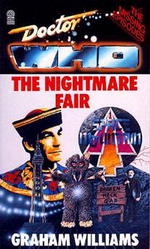
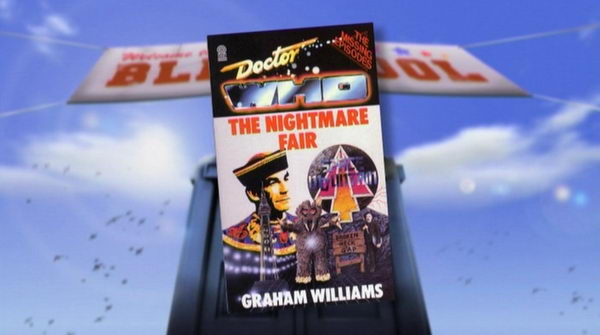

.jpg)
.jpg)
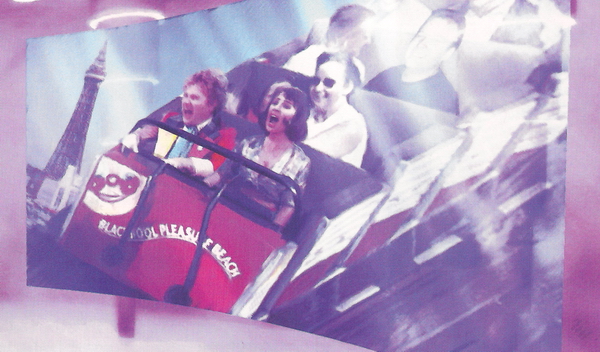
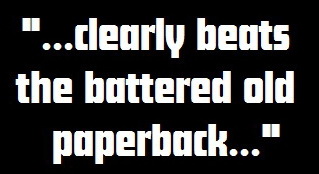 The production itself is tremendous fun, and so very evocative. Presented
as two extend-
The production itself is tremendous fun, and so very evocative. Presented
as two extend-